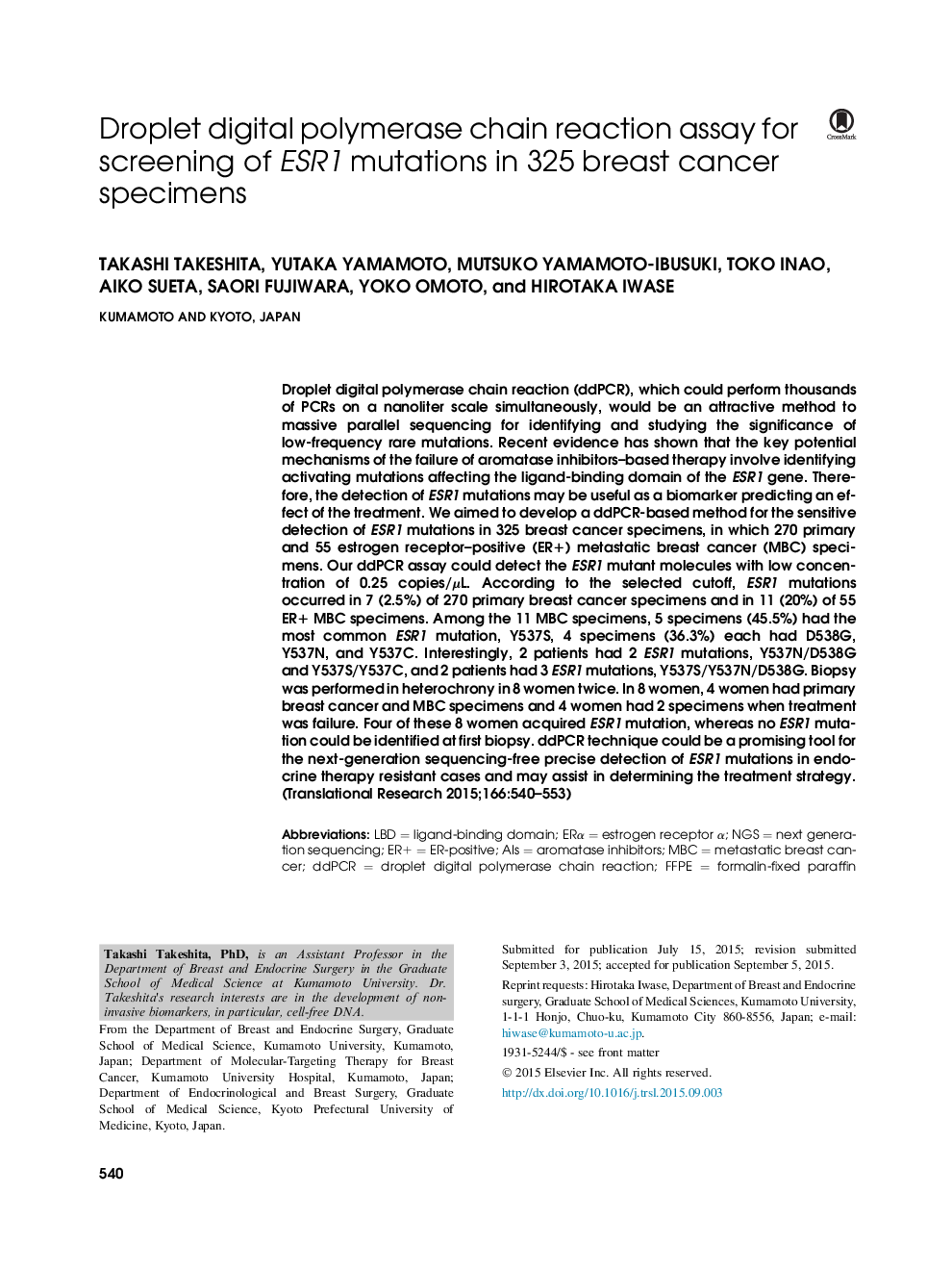| Article ID | Journal | Published Year | Pages | File Type |
|---|---|---|---|---|
| 3840096 | Translational Research | 2015 | 16 Pages |
Abstract
Droplet digital polymerase chain reaction (ddPCR), which could perform thousands of PCRs on a nanoliter scale simultaneously, would be an attractive method to massive parallel sequencing for identifying and studying the significance of low-frequency rare mutations. Recent evidence has shown that the key potential mechanisms of the failure of aromatase inhibitors-based therapy involve identifying activating mutations affecting the ligand-binding domain of the ESR1 gene. Therefore, the detection of ESR1 mutations may be useful as a biomarker predicting an effect of the treatment. We aimed to develop a ddPCR-based method for the sensitive detection of ESR1 mutations in 325 breast cancer specimens, in which 270 primary and 55 estrogen receptor-positive (ER+) metastatic breast cancer (MBC) specimens. Our ddPCR assay could detect the ESR1 mutant molecules with low concentration of 0.25 copies/μL. According to the selected cutoff, ESR1 mutations occurred in 7 (2.5%) of 270 primary breast cancer specimens and in 11 (20%) of 55 ER+ MBC specimens. Among the 11 MBC specimens, 5 specimens (45.5%) had the most common ESR1 mutation, Y537S, 4 specimens (36.3%) each had D538G, Y537N, and Y537C. Interestingly, 2 patients had 2 ESR1 mutations, Y537N/D538G and Y537S/Y537C, and 2 patients had 3 ESR1 mutations, Y537S/Y537N/D538G. Biopsy was performed in heterochrony in 8 women twice. In 8 women, 4 women had primary breast cancer and MBC specimens and 4 women had 2 specimens when treatment was failure. Four of these 8 women acquired ESR1 mutation, whereas no ESR1 mutation could be identified at first biopsy. ddPCR technique could be a promising tool for the next-generation sequencing-free precise detection of ESR1 mutations in endocrine therapy resistant cases and may assist in determining the treatment strategy.
Keywords
cfDNALMDERαAISMBCPGRDCISNGSLBDgDNAMGBHER2ddPCRER-positivecell-free DNAgenomic DNAER+FFPElaser microdissectionstable diseaseprogressive diseaseNext generation sequencingligand-binding domainMetastatic breast cancerIpsilateral breast tumor recurrenceDroplet digital polymerase chain reactionAromatase inhibitorsformalin-fixed paraffin embeddedPartial responseMinor groove bindingDuctal carcinoma in situAndrogen ReceptorEstrogen receptor αHuman epidermal growth factor receptor 2hormone receptorProgesterone receptor
Related Topics
Health Sciences
Medicine and Dentistry
Medicine and Dentistry (General)
Authors
Takashi Takeshita, Yutaka Yamamoto, Mutsuko Yamamoto-Ibusuki, Toko Inao, Aiko Sueta, Saori Fujiwara, Yoko Omoto, Hirotaka Iwase,
